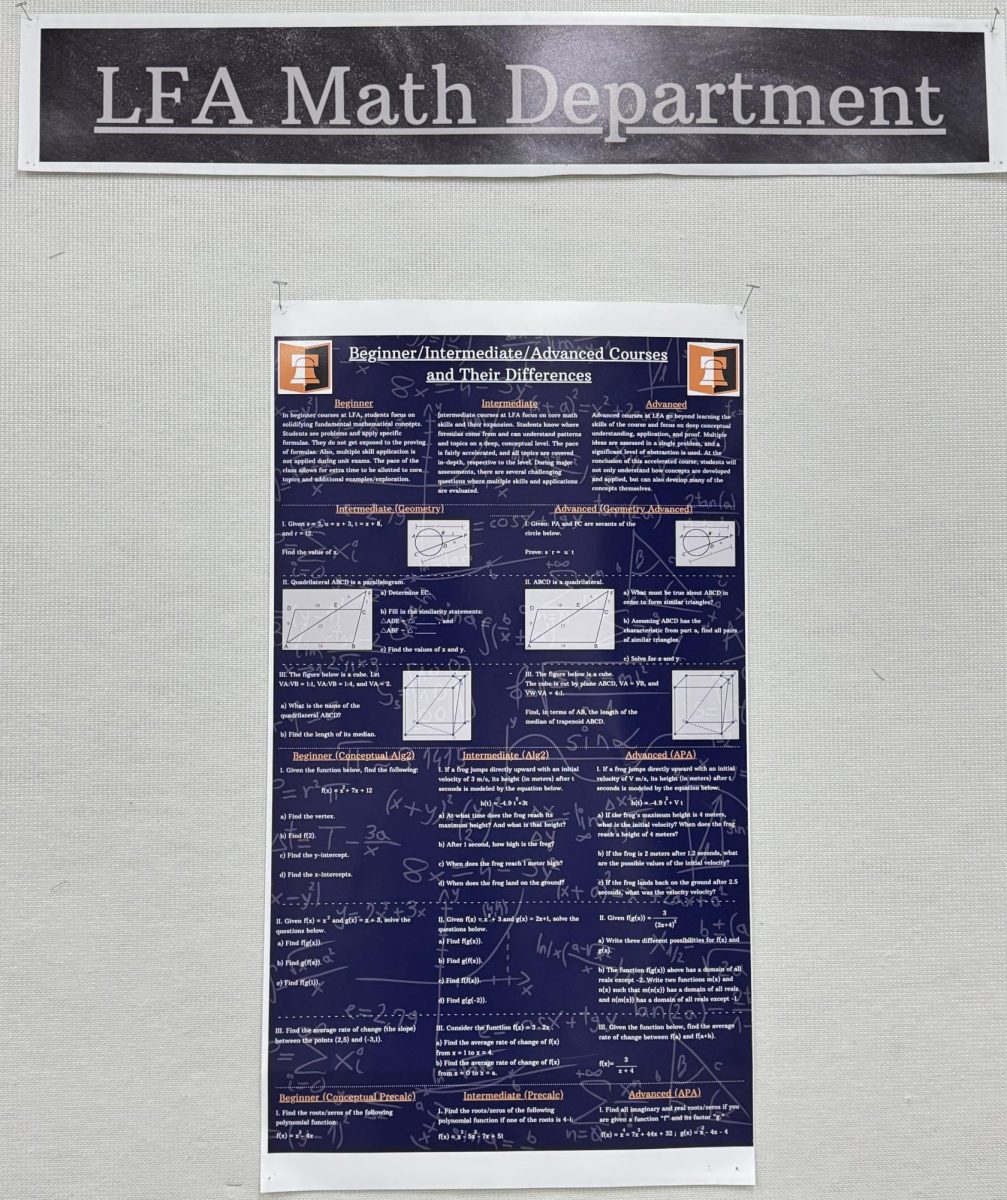In recent years, LFA has standardized its grading system, ensuring for the 2023–24 school year that the score required for an A in one class is the same as in every other.
This standardization has occurred alongside another trend: grade inflation. In every subject and almost every class, the average grade is rising, to the point where the Head of School list (which requires a GPA of 3.75, or an average of slightly above an A-) now contains a clear majority of the student body.
In order to combat this, the school instituted a change for the 2025–26 school year, moving the score required to get an A+ in every class to 98 (out of 100) and above, up from the previous year’s 97.5 and 2023-24’s 96.5. Though this change is good in theory, it will likely fail to achieve the results for which it was implemented.
It is important to note that the requirements for getting a D+, C+ and B+ stay at 66.5, 76.5 and 86.5, respectively, meaning the score for an A+ was the only bar that was moved up. This makes it disproportionately difficult for students to achieve an A+, which is already the toughest grade to obtain.
Additionally, while this change helps to create more distinction between students with a GPA above 4.0, it does more to emphasize perfection on every test and quiz rather than mastery of the class. The time required to push a 97 even higher could be better used working on passion projects or activities, and making students be near-perfect (especially if they aren’t an excellent test taker) only serves to make it harder for students to partake in high school life.
When the margins in college applications are as fine as they are, this change also makes it more difficult to show an upward trajectory in your GPA over the course of your academic career. While this isn’t as much of an issue for the Class of 2026, and largely will not be for the Class of 2029 – as this rule is newly implemented this school year – for the current sophomores and juniors, especially, there will be a fair number of students who have to communicate why their GPA dropped from one year to the next.
In terms of addressing the issue of grade inflation, this is likely an incomplete remedy as well. While making it hard to get an A+ will shorten the Head of School List somewhat, those students are still getting As in the classes where they would’ve gotten A+s, and so the list is likely to stay very long, especially as it’s based on unweighted GPA.
Though it’s harder to implement, the best solution for grade inflation is likely standardizing (to some extent, granted that class structures can vary wildly) how curriculums are scored, shifting the distribution for classes down so that the median grade is closer to a B rather than an A-. Of course, this comes with the same issues of making it more difficult to show an upward trajectory, but it is at least a more comprehensive solution that will help resolve grade inflation. LFA could also shift towards a weighted GPA system to decide its awards — since most colleges recalculate weighted GPA anyways, it shouldn’t lead schools seeing a downward trend by students who were sophomores and juniors when the switch took place.
Obviously, it’s a very LFA thing to speak out about potentially getting an A instead of an A+, but if the school wants to tackle grade inflation, it’s better to look at the root of the problem rather than addressing a symptom that will only go partway towards solving the issue.



































